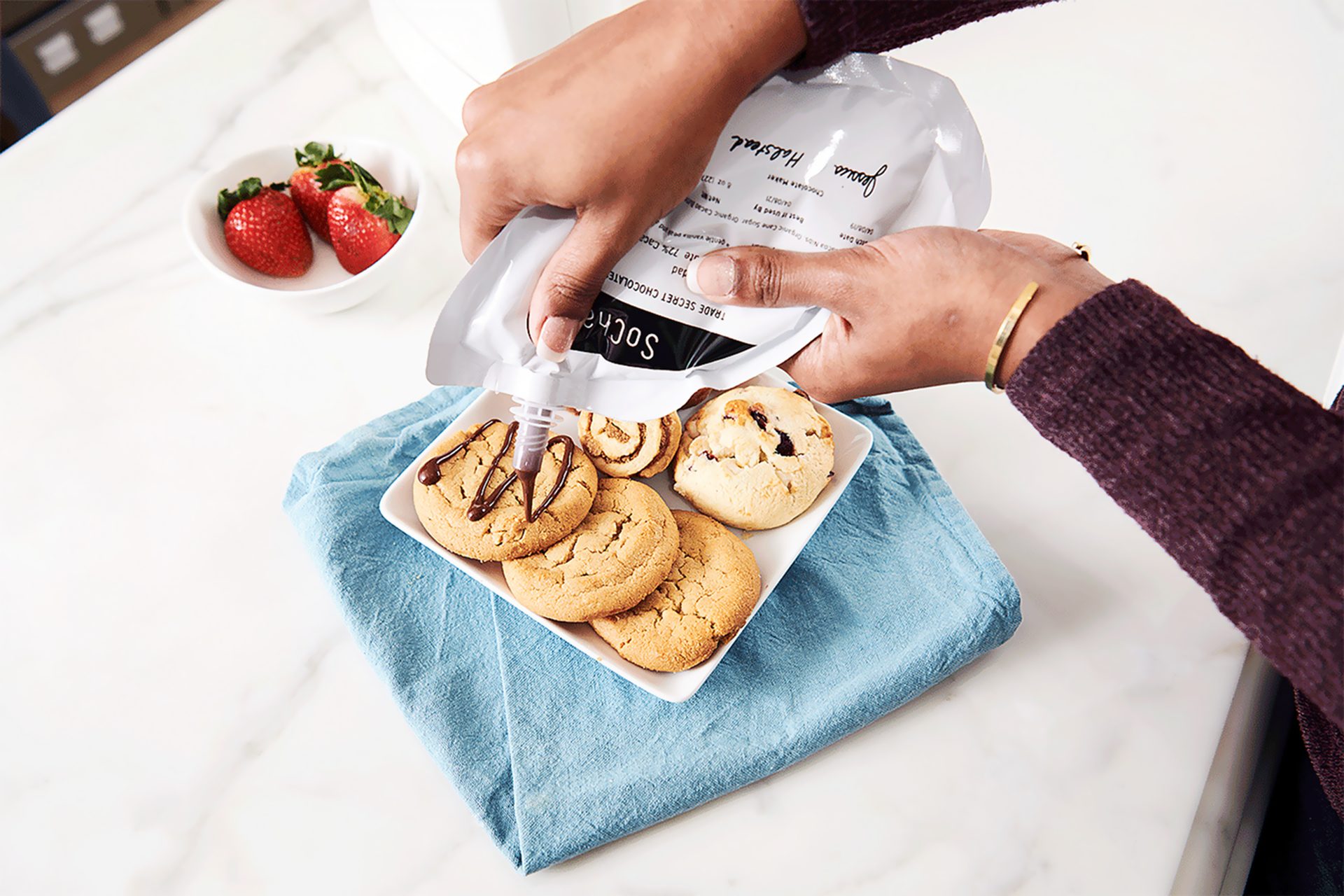
CASE STUDY
SoChatti Chocolate Creates Unique Product Experience with High-Barrier Pouch
Chocolate products are typically considered hazardous to fulfillment centers during summer months, but a combination of a proprietary process and a pouch is just one way that this chocolate is unique.
By Grant Gerke
New brand owners are finding numerous ways to enter retail or e-commerce channels, and a big reason why so many brands are successful is the ability to produce high-end packaging that stands out to consumers. Besides flexible packaging’s impact, creative design teams are also finding ways to create new food experiences and reinvent product categories with packaging.
One company creating new food experiences is SoChatti, a supplier of artisanal chocolate using flexible pouches to offer consumers the ability to experience chocolate in liquid and solid forms. Chocolate goes back to 350 BCE and happened to be in a liquid form for years until the 1800s when it moved to a solid format. And according to many chocolate experts, the product is best experienced when warmed.
ADVERTISEMENT
SoChatti launched its brand in 2018 after four years of research and development, and the company sells its artisanal chocolate on its website, via Amazon and through a select number of U.S. retailers. SoChatti produces and offers chocolate varieties from multiple countries, including Peru, Tanzania, Colombia and Honduras.
However, the company distinguishes itself by offering this high-end chocolate in liquid form via flexible pouches and creating a unique product experience. The chocolate company offers a variety of SKUs and one is the 0.8-oz single serving in a small pouch containing solid chocolate that can also be warmed up to provide the SoChatti chocolate experience.
“We use only three ingredients — cacao nibs, organic cane sugar, organic cacao butter — and do not add any preservatives or emulsifiers,” says Matt Rubin, founder and CEO of SoChatti. “It’s thanks to our unique, proprietary chocolate-making process and packaging that the unique taste and flavor profile of each origin is able to shine through.”
The other packaging format is a larger 8-oz, multi-layer pouch that features a spout so consumers can apply chocolate to a variety of food products in their kitchens, restaurants or foodservice channels for unique dessert presentations or add-ons.
The value proposition with this unique product is the ability to preserve the liquid chocolate, and SoChatti hits this goal due to the pouch’s barrier properties and spout design. Unlike conventional chocolate bars, the SoChatti pouch is filled with untempered chocolate, thereby removing many of the typical processing steps.

Brands are always looking for unique package designs, but Sochatti burnishes its brand by unlocking a new customer experience for its artisanal chocolate via flexible pouch and spout, supplied by Glenroy and Aptar Group, respectively.
Feature photos courtesy of SoChatti Chocolate
Glenroy, Inc. supplies the multi-layer film pouch to SoChatti, while Aptar Group provides the spout. Glenroy and SoChatti collaborated on the overall package design, and the two companies tested more than 50 different packaging iterations before moving forward.
“We started from a general drawing, and built and tested the structure to match the vision and quality expectations of SoChatti,” says Ken Brunnbauer, marketing manager at Glenroy, Inc.
Glenroy constructs and converts the 8-oz and 0.8-oz pouches at its facilities, while the filling, capping and packaging are done by SoChatti. The large 8-oz film structure is a proprietary pouch and offers high-vapor barrier protection that enables chocolate to be squeezed and piped for repeated use without any degradation to the product or package, according to SoChatti.
Prior to filling the pouch, SoChatti chocolate is outgassed using a proprietary production process to remove any microscopic, dissolved air bubbles and to adjust the aromatic profile of the product. The filling process has the chocolate filled through the nozzle under high pressure, which locks in the complex flavors behind the self-sealing valve.
The product is completely shelf stable, and it can be stored and transported at temperatures up to 120°F; the product can be subjected to repeated thermal cycling without degradation. With these barrier pouches, SoChatti can use conventional warehouse and fulfillment services, and eliminate cold-chain distribution requirements for conventional chocolate products.
“Chocolate products are considered hazardous to fulfillment centers during summer months,” says Rubin. “But this pouch has enabled SoChatti to receive a special exemption from Amazon to enable year-round fulfillment without temperature regulation or waste.”
“We started from a general drawing, and built and tested the structure to match the vision and quality expectations of SoChatti.”
Ken Brunnbauer, marketing manager at Glenroy, Inc.
Dual Threat
As mentioned earlier, the Sochatti chocolate resonates with both home consumers and restaurants. To attract more sales, the company created the SoChatti Warmer — a chocolate dispenser — for restaurants and at-home consumers so chocolate lovers could warm up the product and dispense as needed.
The channel in the seal of the chocolate pouch interlocks with the dispenser, ensuring the pouch sits securely and allowing the dispenser to be easily loaded with one hand. This product line extension allows SoChatti Chocolate to be used in baking, snacks and to be eaten on its own in a shot glass or spoon.
“In addition to selling to restaurants, the pouch enables us to be a direct-to-consumer product, expanding our customer base,” says Rubin. “SoChatti has reinvented and heightened the chocolate experience, bringing to consumers what was previously only available to chocolate makers.
June 2022 // flexpackmag.com
